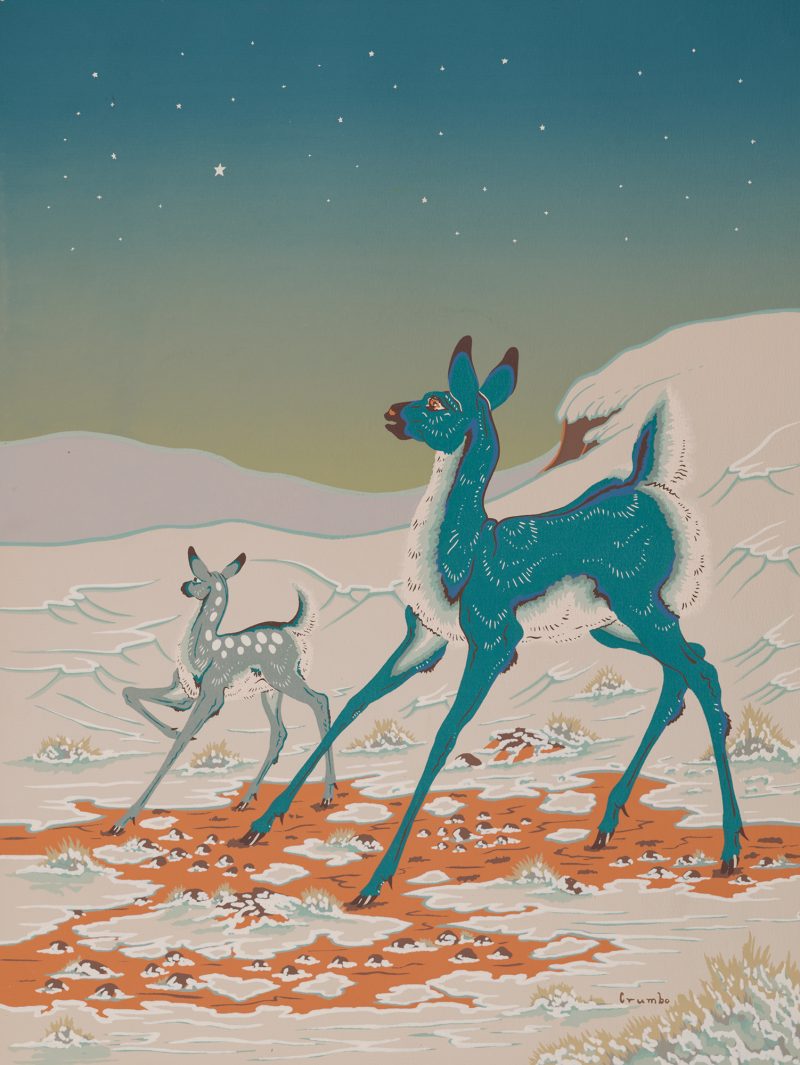
Blue Deer
Crumbo, Woodrow Wilson (called Woody)
about 1946–52
Artwork Information
-
Title:
Blue Deer
-
Artist:
Crumbo, Woodrow Wilson (called Woody)
-
Artist Bio:
American, 1912–1989
-
Date:
about 1946–52
-
Medium:
Serigraph
-
Dimensions:
20 x 15 inches
-
Credit Line:
Wichita Art Museum, Gift of the artist
-
Object Number:
1952.16
-
Display:
Not Currently on Display
About the Artwork
Woody Crumbo was part of a group of youngsters encouraged by Mrs. Suzie Peters, the Field Matron of the Anadarko Agency, who had helped the early Kiowa painters. In the early 1930s he traveled extensively with dance troupes and also taught arts and crafts and silver-smithing. He studied art at Wichita State University and at the University of Oklahoma, from which he graduated in 1938. At that time he became the head of the Bacone College art department, Muskogee, Oklahoma; a position he held for three years. In 1939, he painted six murals in the Department of Interior Building in Washington, D.C. Later, he painted murals for the Fort Sill Indian School, the Nowata, Oklahoma, Post Office, Philbrook Art Center and the Gilcrease Museum. In 1947-48 he was engaged by Thomas Gilcrease, founder of the Gilcrease Museum, as artist-in-residence. In that capacity, he painted a large number of works presently in the Gilcrease collection. He also advised Gilcrease on contemplated purchases and would often accompany him on buying trips. Besides being thoroughly knowledgeable concerning Native American painting and crafts, Crumbo was well-versed in other types of art including Western and early Americana. In the 1960s he served as the Assistant Director of the El Paso Museum of Art, El Paso, Texas.
Like a number of other Oklahoma painters, Crumbo originally painted in a style recognizably inspired by the early Kiowas. Later, he evolved a personal style with which he became strongly identified and which placed him among the first-ranking Native American artists. His dancers are rococo swirls of motion, the most ornate in Native American Painting. His animals, all but his famous “Ghost” or “Spirit Horses,” are drawn realistically with admirable sensitivity.